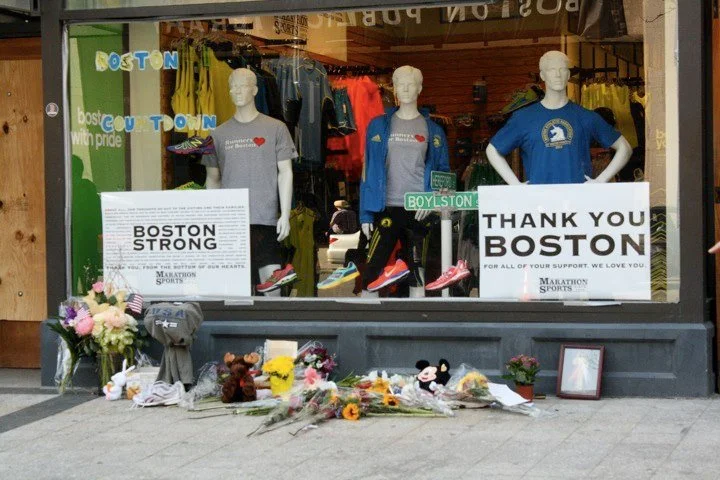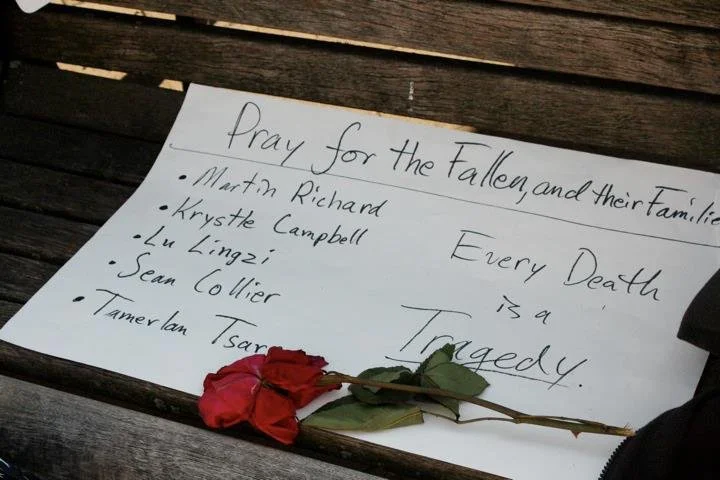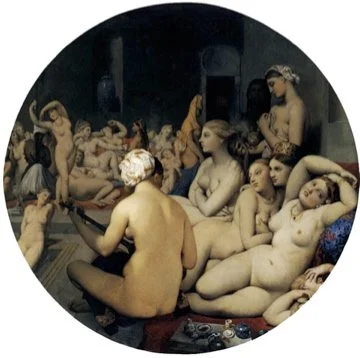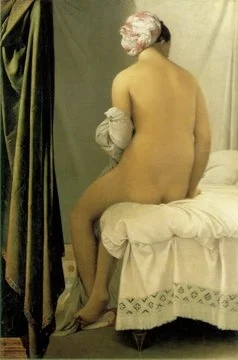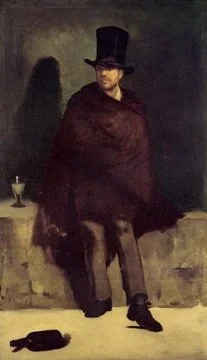New Painting: Copley Square
A week and a half after the Boston Marathon bombings, I went to the Copley Square memorial. The sun was shining, the tulips were blooming, people were wearing light sweaters and sunglasses, but everyone was quiet. Traces of the bombing were still visible across the street, and bouquets, handwritten messages, and running shoes were gathered together.
I started the painting shortly after, but it didn't get done as quickly as I had expected. As soon as it got going, deadlines for other projects came up, and I set this one aside. And as luck would have it, right before resuming months later, I lost all of my reference photos after a computer crash. Lesson learned: always back up your stuff!
I eventually returned to Copley with my camera to gather new images, and found the same spot on the lawn where I'd sat months before. The light was different because it was now winter - it was colder and made Boston look somewhat barren and desolate. Replacing my reference photos of an Old South Church in the spring with photos of it in the middle of December allowed a bit of winter to creep into the painting. The whole right side of the painting looks much colder and not quite as illuminated. I see this as a reflection of the amount of time that passed from when I started to when I returned to it. That day was no longer fresh in my mind, but I was returning to it with a different perspective.
It was peculiar to stand in front of Old South Church after spending hours and hours painting it from photographs. I'd become so accustomed to studying those buildings from a set perspective on a screen, but here I was, walking around them and seeing them from other angles. It's almost like I'd expected to see a matte painting, or a hyperrealistic projection of my painting. I was reminded of listening to a song over and over again on headphones, and then seeing it performed live and watching the song after hearing it so many times. Or watching a movie and then stumbling upon one of the actors in real life and being struck by how tall or short the actor is compared to myself. I noticed things in person that I can't remark in a recording, and it made it feel more real than real life.
As a photorealistic painter, I count on photos to help me replicate postures, hues, and details. And although I was easily able to recapture my references for the architecture, the people populating Copley Square back in the spring were not so easy to replace. So instead, I turned to repurposing.
Inventing just wasn't an option with a partially finished photorealistic painting. But repurposing, to a painter who relies on photo references, is a freeing alternative process. Recycling an image from another source offers the security of the concrete, but also the freedom to "cut and paste" as needed. It also opens up the painting to my imagination, and I am able to make a composite of parts that make sense as a story, whether or not they were together in the first place.
Ingres and Manet are two of my favorite examples of painters who used this technique. Ingres in a more delicate manner, Manet rather unapologetically. In "The Turkish Bath", some of the poses are almost identical to those of models in Ingres' other paintings. It often seems that Ingres copied and pasted certain people from one painting to another, and used a horizontal mirroring and slight adjustments to disguise this tactic. Manet, on the other hand, kept everything the same, and did not bother with correcting inconsistencies. The man from "The Absinthe Drinker" was clearly repainted into "The Old Musician", along with the wall he leans against, his shadow, and the lighting, all of which are inconsistent with the rest of the painting. But then, Manet is pretty ballsy. He wanted us to acknowledge that a painting is a painting, and as the painter, he is not restricted to painting the absolute truth.
In the same vein of thinking, I repopulated the painting with people from all kinds of places, from strangers in another country to people from my life here at home. I looked in my photo library for people whose attitudes seemed like they belonged at this scene, so that it almost felt like casting a set of actors to play characters in the painting. I ended up "casting" strangers, my mother and my brother, acquaintances, and eventually myself. To place myself into the painting made it feel all the more real to me, and when I look at it now, I feel a part of myself sitting on both sides of those tulips: one a participant in the scene and the other an observer. In truth, I typically paint scenes that I am not involved in, but I was a part of this day, so it makes sense that in this instance, I don't just see myself as the narrator, but as a part of the story.
It's been almost a year since I started this project, and it feels great to finally share it!! And now, onto the next one!











